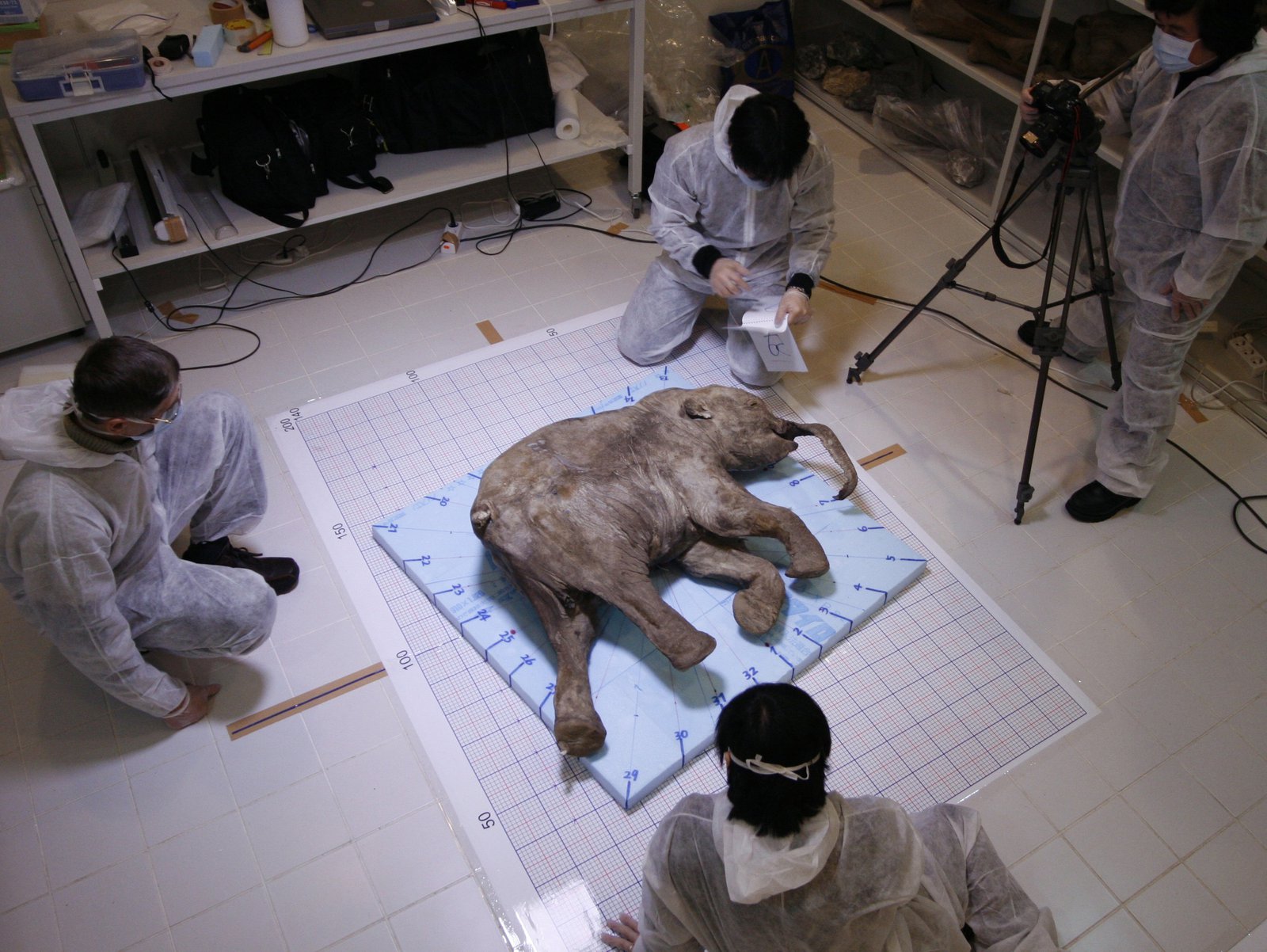The story of baby Lyuba
About 400,000 years ago in the middle Pleistocene, woolly mammoths first appeared in the frozen north of Siberia. They then spread to North America and Europe during the last Ice Age.

© RIA Novosti
They were hairy, lumbering, elephant-like creatures, some standing more than four metres high, with immense curved ivory tusks used for fighting and foraging for food. Highly adapted to the cold, they had a two centimetre-thick hide, eight centimetres of body fat, a dense undercoat and small, fur-lined ears.
Fast-forward tens of thousands of years to 2007. An Indigenous Siberian reindeer herder, Yuri Khudi, stumbled upon Lyuba and knew she was an important find. Khudi didn’t touch the mammoth calf carcass but went away to get someone with more authority, only to find on his return that the Ice Age baby had disappeared.
Lyuba eventually turned up, propped up against someone’s house, bartered for two snowmobiles and a year’s worth of food. Dogs had gnawed off her right ear and her tail. The police confiscated the calf and took her by helicopter to the Shemanovsky Yamal-Nenets Regional Museum Exhibition Complex.
Over the next few months, international scientists put Lyuba through a battery of tests to determine her provenance. After their research, they hypothesised that the calf was preserved in lactic acid produced by a bacterium that invaded her body after death, essentially “pickling” her soft tissues.
They also removed DNA samples so they could carbon-date her. They discovered that she was about 42,000 years old, although she’d only been alive for a month when she drowned in a muddy river.
Scientists in Russia and Japan did extensive tests on her, including a CT scan that revealed her organs were intact. Her intestines still contained adult mammoth faeces, showing that she followed the same behaviour as her elephant cousins, eating her mother’s faeces to fill her gut with microbes, to prepare her body to digest grass.
Since her discovery 10 years ago, Lyuba has travelled to only four countries around the world and in 2017/2018 she was on display at the Australian Museum as part of the Mammoths - Giants of the Ice Age exhibition.

